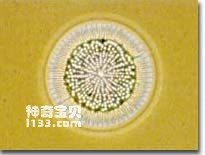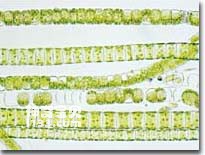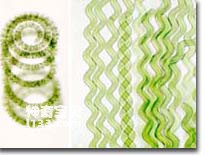Most algae live in water. Their structure is very simple, and each visible individual has no distinction between roots, stems, and leaves - it is a leaf-like body. The size of algae varies greatly. For example, diatoms living in the ocean are very small. They are phytoplankton among plankton. Laminaria are a group of very large seaweeds. These brown seaweeds can be up to 4 meters long. Sargassum can be tens of meters long. Algae also come in different shapes: some are simple threads (straight or branched), others are flat or spherical with bumpy edges.

Diatoms

Scenedesmus
According to the color of pigments, algae can be divided into three categories: green algae, brown algae and red algae. Green algae (such as sea lettuce and Spirogyra) have only green pigments - chlorophyll; brown algae (such as Fucus) have only brown and yellow pigments; red algae contain red and blue pigments. Algae use pigments for energy, and they also need water and light to grow. Brown algae can only grow in seawater, while green and red algae can also grow in freshwater. Some algae manage to leave the water, such as Chlorococcus that live on tree bark or on old damp walls.

Spirulina
The methods by which algae reproduce are diverse and complex. Fucus algae, a brown algae that grows on rocks, is a typical example. Fucus can be male or female, or both at the same time. At a certain time, the edges of the fronds swell, covering the reproductive organs used to produce reproductive cells (or gametes), and the produced reproductive cells are released into the water, where fertilization occurs, that is, the fusion of male and female gametes. , forming a single cell - a fertilized egg, which then grows into a new plant.
Chinese scholars generally divide algae into 11 phyla: cyanobacteria, red algae, cryptophytes, dinoflagellates, chrysophytes, yellow algae, diatoms, brown algae, euglena, green algae, and charophytes.
animal tags: Cyanobacteria cryptophytes dinoflagellates chrysophytes
We created this article in conjunction with AI technology, then made sure it was fact-checked and edited by a Animals Top editor.